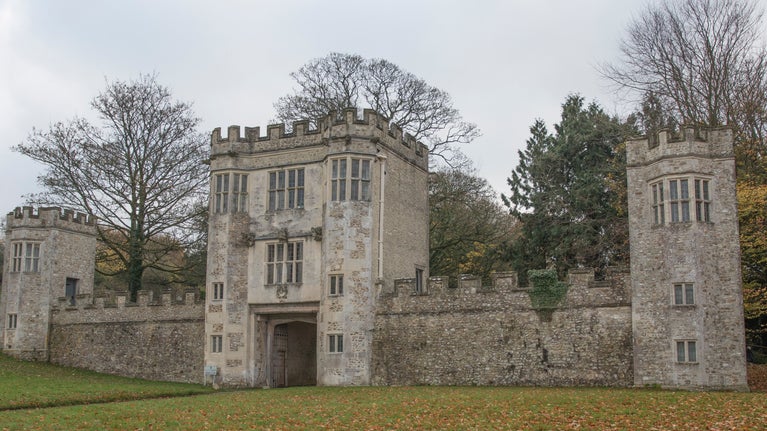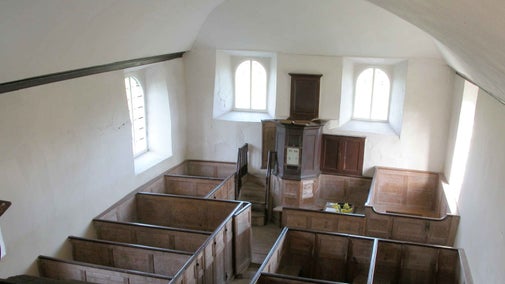
Book your visit
Shute Barton is open for guided tours. Members can book for free, while non-members need to pay when booking. People who arrive and haven't booked will be turned away.

Shute Barton is a medieval house with royal connections and was once a large and impressive medieval estate. It dates back to 1380 and has important historic significance as one of the oldest manors in England.
Shute Barton is a medieval house with royal connections, a building of battlements and towers. It dates back to 1380 and has important historic significance. The building has one of the largest fireplaces in England as well as many other original features including panelling, spiral staircases and medieval windows.
Many parts of the house have not changed since it was abandoned for new Shute House in the 1780s.

This gatehouse was built to impress. Above the archway, the Pole family coat of arms – which reads Virtue Prevails – would have signalled to visitors that they had arrived at Shute. The theatrical battlements and fantastical gargoyles would set the stage for what was to come.
Sir William Pole commissioned the building in 1587. A keen writer and antiquarian, he designed an Elizabethan-style entrance and lookout. From the central tower family and guests could watch hunts taking place in the old deer park on the hill opposite. It was the perfect look-out point especially with a roaring fire to keep the family warm on colder days.
Over the centuries the gatehouse buildings would have been occupied by a variety of families, probably employed on the farm or estate – carpenters, farm labourers and gardeners. During the 1870s the two side lodges were taken down and replaced by the buildings you see today.
The last family to have lived in the gatehouse were the Newbys. Mr Newby was a caretaker to the girl’s school at new Shute House in the 1930s. The gatehouse was acquired by the National Trust in 1959 and leased to the Landmark Trust from 1979 for holiday accommodation.
At St Michael’s Church religious worship would have been an important part of family life. Its proximity to the main house and living quarters was deliberate. The church contains many monuments to the Pole family, including a marble statue of Sir William Pole, Master of the Household to Queen Anne.
Based on a 1781 map of the Shute Estate, Legacy to Landscape was a three-year community project celebrating a valuable landscape ‘hidden’ within East Devon. Find out more and view the estate map.

Shute Barton is open for guided tours. Members can book for free, while non-members need to pay when booking. People who arrive and haven't booked will be turned away.

Shute Barton is open for pre-booked tours on selected dates through the year. Find out how to book and what you can see during your visit including an informative tour with time to wander around the garden at your leisure at the end.

The history of Loughwood Meeting House is one of secrecy and religious persecution dating back 300 years. Discover more of its story up until it was handed to the Trust in 1969.